Top speed 301 km/h Length 13 m First flight January 22, 1948 | Wingspan 18 m Introduced 31 December 1950 | |
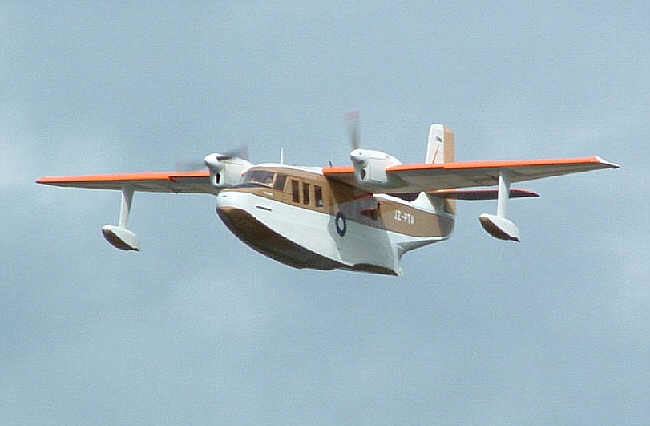 | ||
Short sealand
The Short SA.6 Sealand was a light, commercial Amphibious aircraft for 5-7 passengers, designed for the general overseas market in territories with suitable water access and/or runways. It could take off from and land on rivers, lakes and sheltered bays or prepared runways. It was flown by either a single pilot or a pilot and navigator and saw service with the Indian Navy and in many other parts of the world, including Borneo, East Bengal, Norway and Venezuela.
Contents
- Short sealand
- Design
- Operational history
- Civilian Operators
- Military Operators
- Specifications Sealand I
- References
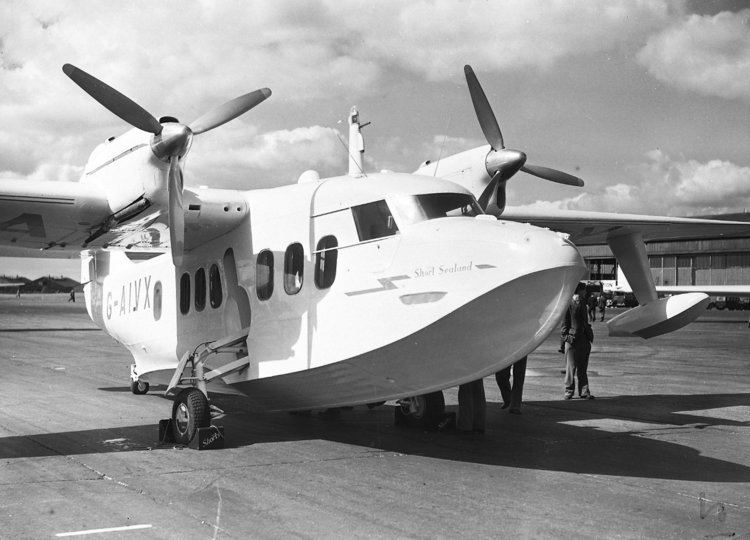
Two variants were produced, the SA.6 Sealand I and the SB.7 Sealand III, an extended version with longer wings, a deeper rudder and a strengthened hull.
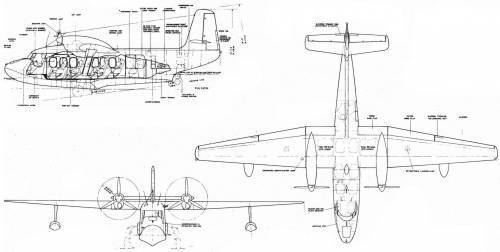
The SB.2 Sealand II was planned as a second prototype but was never completed as such, becoming the first of the batch of 4 pre-production aircraft G-AKLM to G-AKLP.
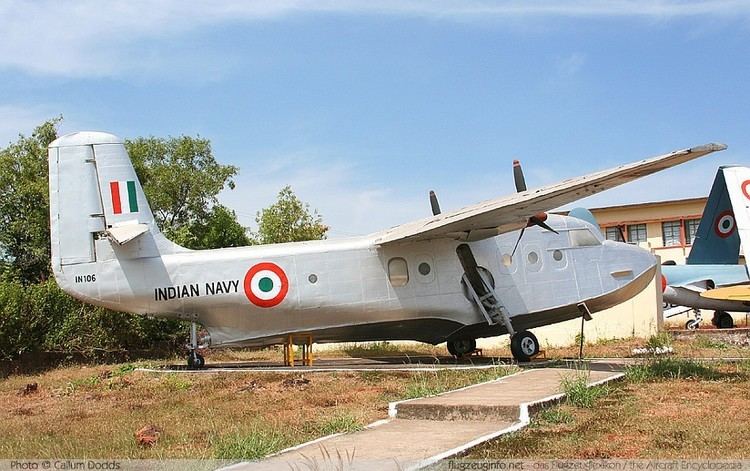
Design

The Sealand was a high wing cantilever monoplane of all-metal construction with a flying boat hull and both underwing floats and a standard tail-wheel undercarriage; the two main wheels retracted into recesses in the hull below the wings, while the tailwheel retracted behind the hull's planing bottom.
Orthographic drawings (of not very high quality) of the Sealand can be seen online here.
Operational history
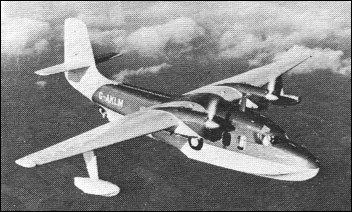
The prototype Sealand was launched on 19 January 1948 and flew 3 days later from the waters of Belfast Lough, piloted by Shorts' Chief Test Pilot, Harold Piper. Four pre-production aircraft were built, the first of which was retained by Shorts for demonstration purposes (eventually crashing in fog while on a sales tour of Norway, killing both the pilot and the sales representative). The other three were eventually sold to overseas operators in Norway and Borneo. A further ten Sealands were built and sold to a variety of small operators, including one (G-AKLW, later SU-AHY) equipped as an "air yacht" with luxurious fittings for a private client in Egypt and given the name Nadia.
The Indian Navy ordered 10 Sealands in 1952 to an enhanced specification, which included dual controls, increased fuel capacity and uprated engines. All ten aircraft were delivered between January and October, 1953. The last Indian Navy Sealand was taken out of service 12 years later; one aircraft is on display at the Indian Naval Aviation Museum.
A second Sealand exists at the Air Museum in Belgrade, which is claimed to have been registered originally as G-AKLF. This registration was not, however, assigned to a Sealand; this aircraft is also said to have borne the local registration YU-CFK, which indicates that it was in fact the aircraft with the Shorts manufacturing number SH.1567, i.e. G-AKLS.
A third, G-AKLW (originally bought by the wealthy Egyptian client mentioned above) is under rebuild (2008) at the Ulster Folk and Transport Museum at Cultra, Holywood, Northern Ireland.
Shorts retained the first prototype (G-AIVX) for company use, often using it without the wing-floats and struts to increase its payload. It was finally scrapped it when its Certificate of Airworthiness expired in April 1955.
Civilian Operators
Military Operators
Specifications (Sealand I)
Data from Barnes and James 1989, Jackson
General characteristics
Performance
